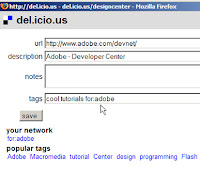
It is about that time of year when I had to decide if I was renewing my contracting or asking for a transfer. Some people may be looking at graduation too so I thought this would be a good time to talk about interviews and how I handled them. As head of the department, I was asked to hold many interviews (there are always vacancies in special ed!) and I was amazed at how unprepared some applicants were. Here is a list of what I think are important:
1. Dress your best. You wouldn’t believe the guys that came in wearing a white dress shirt over a printed or colored tshirt! Women would come in wearing low cut, very sexy clothes which might work if they were working somewhere they needed to appeal to the opposite sex but a high school is definitely not the place!
2. Bring a copy of your resume and/or portfolio for the interviewer. Usually a resume would be sent to my principal but that doesn’t always mean the person holding the interview has one.
3. If you are asked to tell about yourself, give a few minutes of highlights not your whole biography from birth to present. One person spent 30 minutes telling me her life history including illnesses and physical problems. This was way too much information!
4. Know your philosophy and beliefs. What do you feel is important in education? Why do you feel this way?
5. Know your strengths. Tell what you do good and why it would benefit the school to hire you. You are your best sales person and you need to make the school feel like they would really miss out if they didn’t hire you.
6. Know your weaknesses. No one is perfect and the school doesn’t expect you to be perfect. In fact, I was always suspicious of someone who felt they were perfect.
7. Give examples of projects you have done with the students. If you don’t have any examples for the level of students you hope to be teaching, offer suggestions that are appropriate for that grade level. This will give the interviewer an idea of your skills.
8. Give examples of how you have worked with colleagues. Being a team player is very important because collaboration and communication with others are the keys to successful teaching at any school. As head of the department, I didn’t want anyone who wouldn’t be willing to work with me or the other teachers.
9. Give examples of how you handled discipline. Let’s face it, discipline is a big issue and schools want to know that you can handle whatever you are given without them having to bail you out every minute.
10. Give examples of parental contact. I always felt this was important and didn’t usually lean towards the ones who were against contacting parents (for good or bad news). I have been told that by the time the students reach high school, teachers shouldn’t have to call parents anymore. I can’t tell you how many times my parent contacts have saved my own behind because I was able to clear up misunderstandings before they reached the administration.
11. Be prepared to ask questions. When an applicant asks me questions I feel like they are really interested in the position and want to know more about the school. It also gives me time to learn more about the applicant through body language. Ask about the mission and vision of the school. Ask about the population (Do all the students live in the community near the school? What percentage are on free lunch?) What kind of extracurricular activities are there? What kind of duties are required of teachers outside of teaching? How many teachers and administrators are there in the school? When will a decision about this position be made?
12. Watch for the signal that the interview is over. I usually end it with thanking the applicant for coming in and letting them know that someone would be in touch with them. I had one person continue to talk and talk with information about her personal life and some jokes but after an hour of this interview, I had to return to class and mentioned this. An administrator and I were holding the interview and thanked her for coming. When we all stood up and walked to the door of the room, she continued to talk. The two of us even walked in the hallway away from her and she was still talking in the empty room and I knew we were rude but there was nothing else we could do. I finally left the administrator to handle this person and needless to say, we didn’t hire her.
If I have left anything important out or you think other things should be added, please leave it as a comment so others could read it.
 Here are some interesting sites that I’ve found interesting this week. As a teacher, I feel we have to keep up to date concerning research in our field and current issues in the education system. I hope some of these inspire you, inform you, and even have you asking questions. Thank you for coming by and visiting!
Here are some interesting sites that I’ve found interesting this week. As a teacher, I feel we have to keep up to date concerning research in our field and current issues in the education system. I hope some of these inspire you, inform you, and even have you asking questions. Thank you for coming by and visiting! 






















